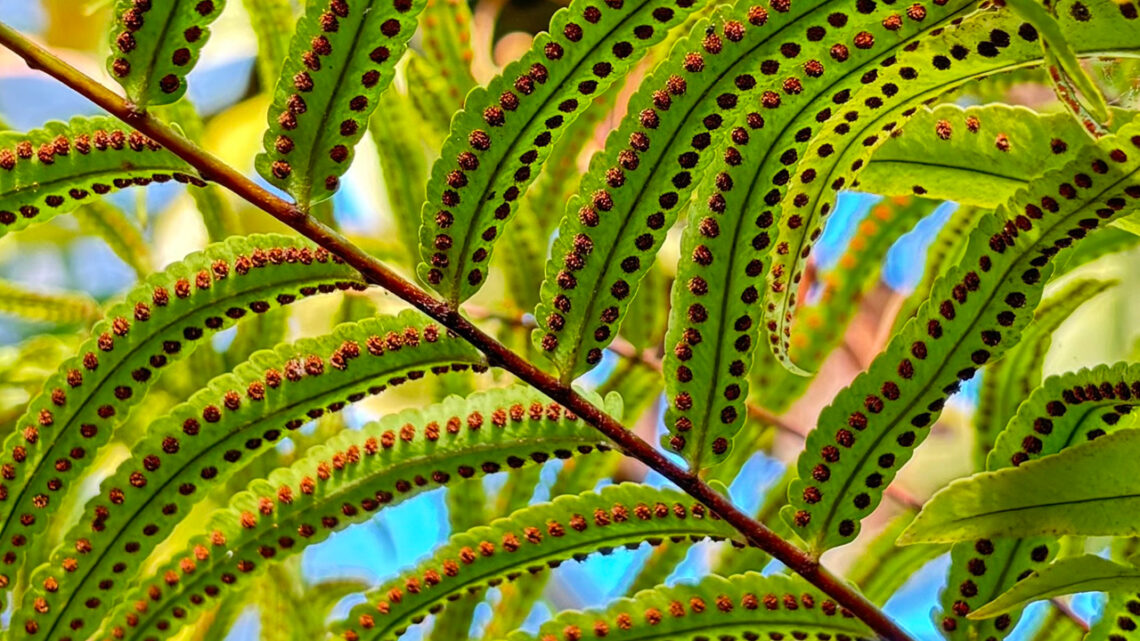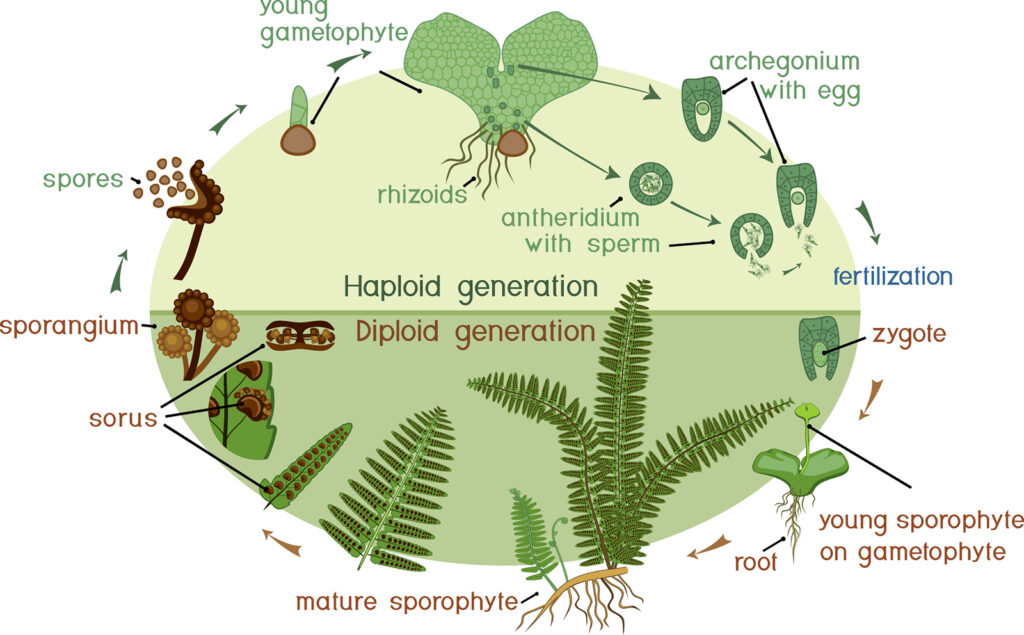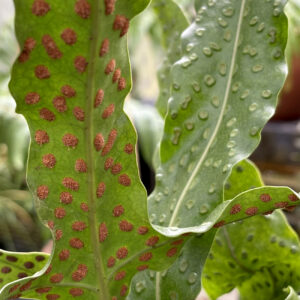
All in the Name of Reproduction
Nature creates an amazing array of patterns in the plant world providing us with a never-ending source for observation and inspiration. Look closely at a fern frond, and you can see the evidence of this patterning in the various dots or dashes that appear, typically on the underside of the frond. These distinctive patterns inform the taxonomy, or naming, of ferns, and are where the fern reproduction cycle begins!
Ferns come from an ancient lineage of non-flowering plants that reproduce by spores. The fern reproduction cycle begins with the asexual spores, which are contained in sporangia (spore cases) usually located on the underside of the fronds. Sporangia may appear as green, brown or black dots or even stripes and are often arranged in distinctive patterns. More unusual is the pattern of tiny, stalked growths along the edge of Tectaria moorei, pictured below.

Tectaria moorei
Individual spores are extremely small–a fern frond only 60 cm (25 in) long may produce over 7,000,000 spores!

Illustration showing the reproductive lifecycle of a fern
If conditions are right, the spores usually get ejected into the air to land somewhere else (hopefully a moist, suitable medium) to germinate. The germinating spore grows into a tiny prothallus, the gametophyte phase in the life of a fern. The prothallus is a short-lived heart-shaped structure typically 2–5 mm wide, with a number of rhizoids (root-like hairs) growing underneath. These rhizoids bear the sex organs—archegonia (female) and antheridia (male). Sperm are released from the antheridium when water is present and swim to an archegonium to fertilize the egg. The resulting cell, the zygote, develops into an embryo with stem, roots, and fronds, eventually becoming a plant we see as a fern.

Phymatosorus scolopendria in the Orchid Fern, and Carnivorous Plant House
The Garden has an outstanding collection of ferns. In 2012 the collection was recognized nationally for its scope and high standard of care by the Plant Collections Network. With over 500 accessions of 360 taxa of ferns, about 65% grow in our outdoor collections and 84% are of known wild origin, making them valuable research specimens.
Visit the Orchid, Fern, and Carnivorous Plant House to see a wide variety of ferns with developed sporangia. Or learn more about the Garden’s extensive fern collection that includes, among others, tree ferns and xerophytic (dry-growing) ferns.
